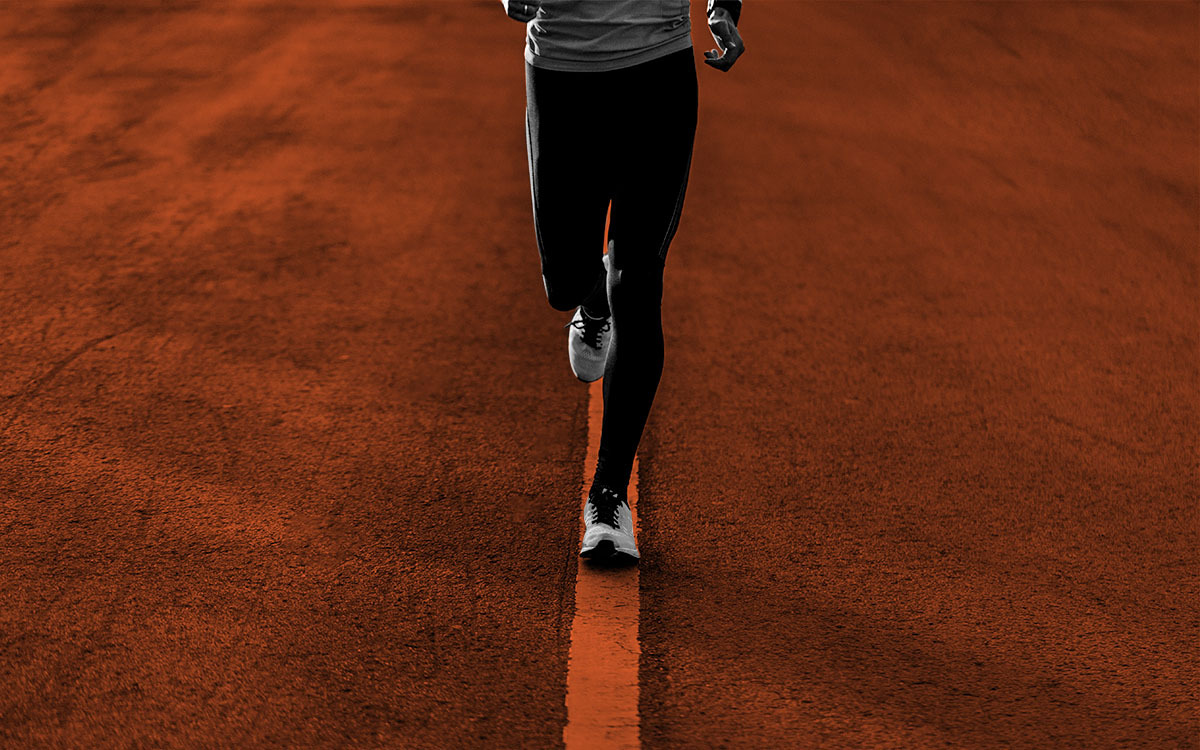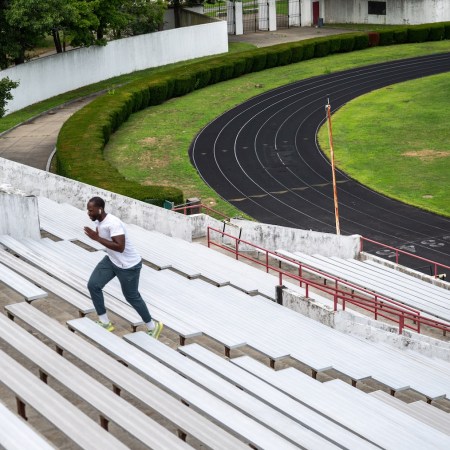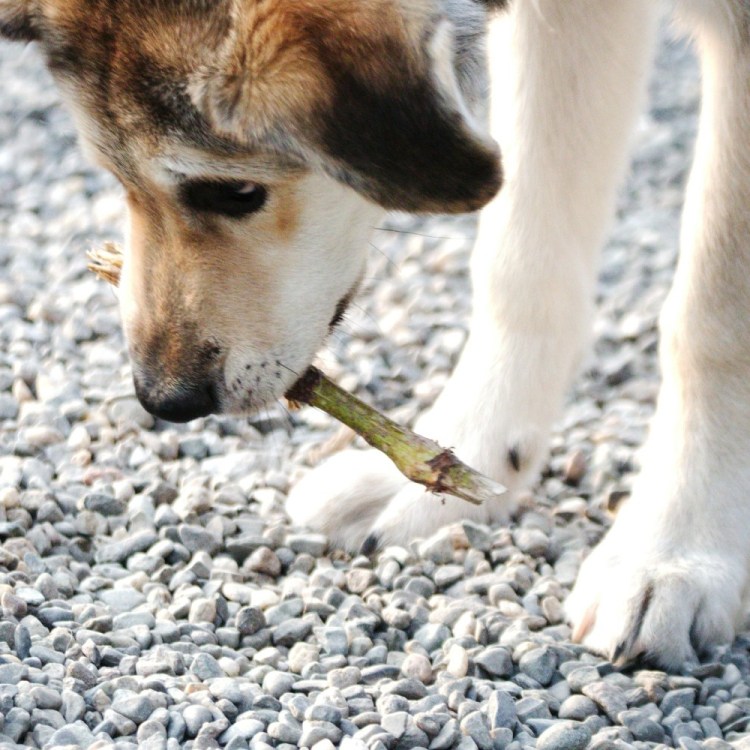Welcome to The Workout From Home Diaries. Throughout our national self-isolation period, we’ll be sharing single-exercise deep dives, offbeat belly-busters and general get-off-the-couch inspiration that doesn’t require a visit to your (now-shuttered) local gym.
The last time I was running everyday, almost 10 years ago, my cross country team nearly came to blows over a GPS watch. My GPS watch. I’d gotten the Nike+ SportWatch (powered by TomTom) at the beginning of that summer, and it had promptly thrown a wrench into our team’s manual of heritage runs. If the third house past that deli on Maple is really the mile marker, then we just went out in a 5:40. The eight-miler that loops around the reservoir is actually a lot closer to seven. And so on.
The watch quickly lost all credibility, and unwilling to go down with the ship (I liked having friends), I stashed it in a drawer and dug out my $40 Timex Ironman. There were reliable GPS watches at the time — Garmin’s Forerunner series had fantastic satellite discovery as early as 2009 — but most of the team wore Timex, or Casio, which you could pick up at the pharmacy in town for $16. Even if my watch had been spot-on accurate (which it wasn’t), it was never long for that season. It had brashly questioned the sanctity of runs that had been passed down to us, miles that had been plotted by alumni who now had kids or lived in Seattle. Surely, the thinking went, the team would know as a unit whether we had run hard or not. We didn’t need to plug anything into a computer.
I thought about that GPS watch drama the other day while finishing a run at the gates of my old school. I’ve firmly come back to running during the national quarantine, and like stepping out of a time machine, I’ve enjoyed a rapid-fire discovery of improvements in the sport. Stretching techniques have been refined, the apparel is better than ever, and tracking technology, at last, is top-notch. A few days into my new daily routine, I even decided to join a community that hardly existed the last time I was running. Back in 2010, just 100,000 activities had been uploaded to Strava, the social-fitness network started by former Harvard rowers Michael Horvath and Mark Gainey in 2006. As of February 2020, three billion activities have been logged on the platform, and Strava counts 50 million regular subscribers, with a rate of one million new athletes joining a month.
After a month of using the app, I’ve come to some conclusions. The biggest being that I don’t want to run without it. I haven’t been on a team in a while; I’ve long been without a guidebook of routes to turn to, or a singular, qualifiable goal, like “make varsity.” There’s no obvious way to change that at the moment. The same reason I’ve been running is the reason I can’t join a running club or look forward to a race date. But Strava befits the athlete’s current, lonely status quo.
Like so many other returning runners, and far more fledgling, quarantine-born runners — who ran a loop out of mental necessity in late March and have since decided that they rather not do the lockdown without it — I’ve come to count on the platform as a steady, surprising companion. It not only has a grandparent-proof interface, and the best, most consistent tracking system this Rip Van Winkle runner has ever seen. It also has its own language, its own mythology, and its own satisfactions, which can vacillate between triumphant and silly but are always quite fun.
If you’ve been running (or cycling, or swimming … the app tracks the endurance Holy Trinity), and are either on the fence about Strava, or have no clue what to expect in downloading the platform — no shame in that, 80% of the platform’s users are based outside the US, with Germany, France, Brazil and the UK leading the way — consult our handy primer first. We’ve broken down all the app’s upshots and shortcomings to consider before taking the plunge.
The basics
Strava is refreshingly efficient. There’s no three-minute period to wait for “satellites” to be “acquired.” (Another reason people hated my Nike watch a million years ago.) Once you’ve finished your warm-up routine and are standing at the starting line, wherever that may be, you just just open the orange app and click record, which launches the map. I’ve really enjoyed the ease of the system. Starting line delays can be stressful, after all. More often than not, runs are shoehorned into an odd hour of the day, in an effort to honor other responsibilities. It’s so easy to give up on your watch as you hop there, itching to get moving. Strava’s tracking tech makes sure you can get on the roads right away, and have every mile accounted for.
After you hit the start button, it’ll begin timing your run and reporting mileage, real-time pace, and pace-per-mile. The numbers are big and easy to read, and assuming you don’t click out of the app, or your phone doesn’t auto-lock (just make sure you set up your fingerprint code — having to type seven digits in to launch the app when you’re about to PR isn’t fun) you can peer down and check your stats whenever. I personally prefer running with a phone. I have a grippy case for the express purpose of not fumbling my phone during runs, and I pair my phone with Powerbeats Pros to crank music on tempo runs and podcasts on long runs.
If you’d rather a wearable, Strava also supports products from Apple, Fitbit, Garmin, Polar and Samsung. But assuming you can run with your phone, there’s a certain inclusivity to Strava’s model. It’s a free app, for the majority of Strava users — some pay $60 a year for a premium subscription called Summit, which includes more leaderboard filters, advanced heart rate analysis and a safety feature called Beacon — so you don’t need to spend three times the amount you’d spend on a pair of sneakers for a shiny new wrist apparatus. Just download and go.
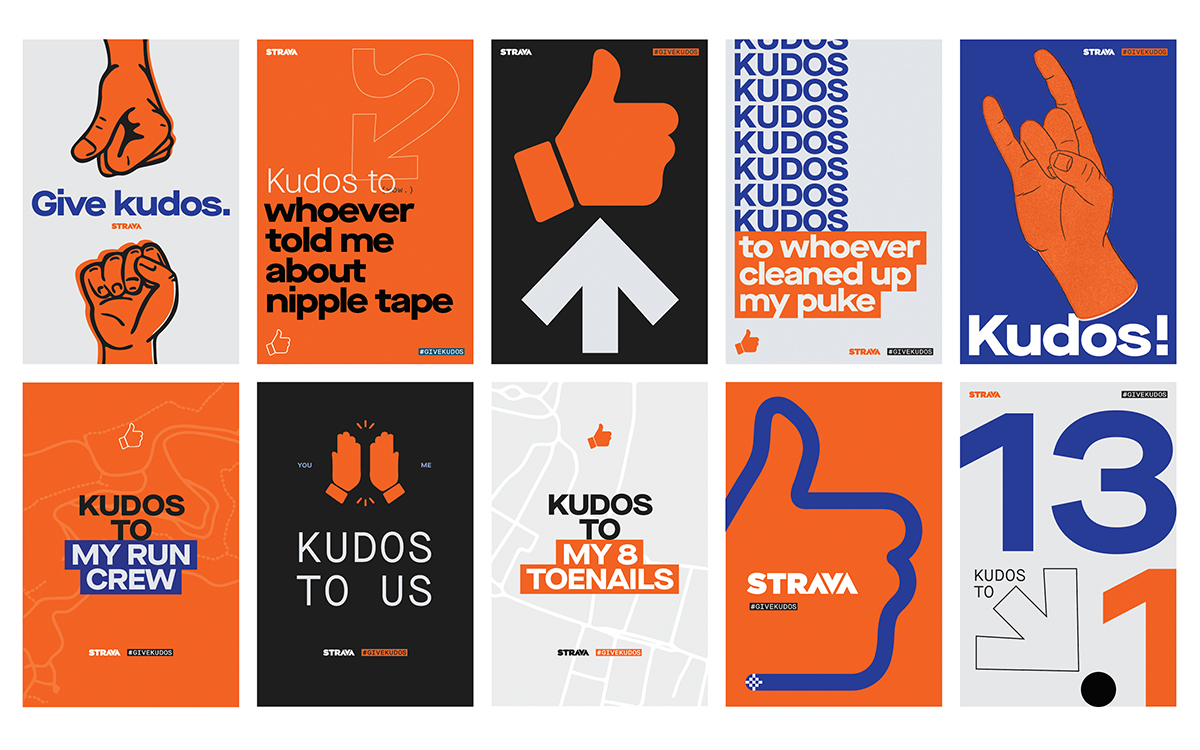
Kudos mentality
Strava isn’t the only running app in town; most weekend warriors will have at least heard of services like Runtastic by Adidas, Runkeeper, MapMyRun, Endomondo, Nike+ and Google Fit. But Strava’s social element sets it apart. After you complete a run, you have a choice to publish it to your profile, discard it, or hide it (where it’ll only be available to you). If you choose to publish it, as most do, it will appear on the feeds of anyone who follows you, plus whatever clubs or groups you belong to on the app. Not long after, you’re likely to get a kudos or two.
The feature is Strava’s version of most social media’s “like” or “favorite” button, but it comes insulated from the decade-and-a-half of sarcasm, irony, jealousy and insecurity that has rendered those features near meaningless on all the sprawling and cynical profile-platforms. It’s rare to have a serious following on Strava — an average account has less than 20 people actually seeing/caring about one’s posts — and followers are usually friends. But when a kudos arrives, anywhere from 12 minutes to 12 hours after logging an activity, it’s a nice thing, a little pat on the back, an “I see you out there!” It scratches a fundamental itch of the social media age (recognition for doing a thing) without overpowering or derailing your afternoon, and importantly, it’s meant as a positive sentiment. It reminds me of standing on 1st Avenue on Marathon Sunday, the way that people cheer as their friends go by.
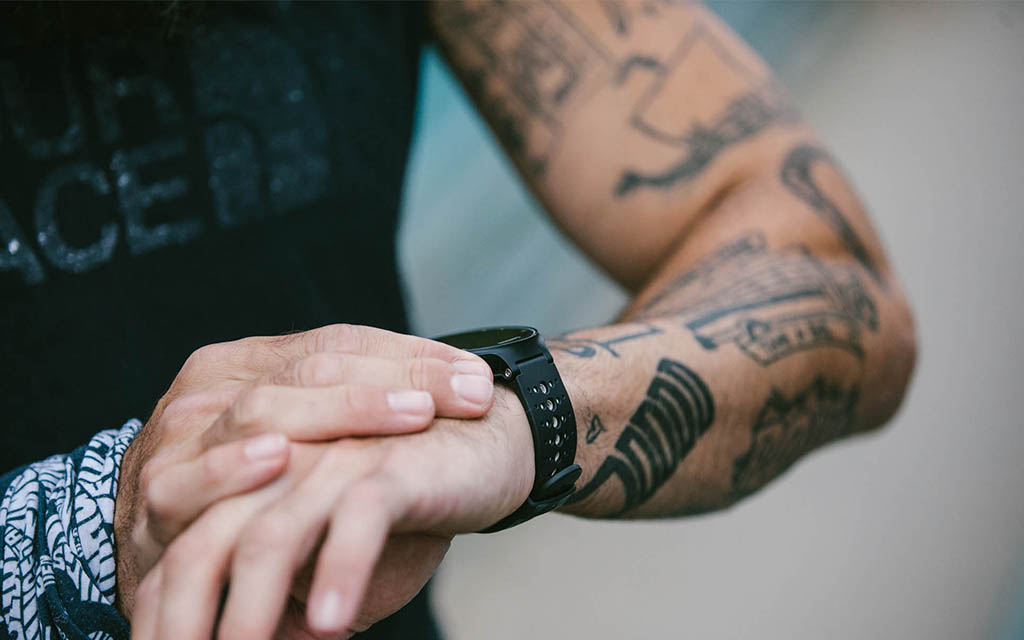
KOM/QOM
Here’s where Strava lore really gets going. I was confused, the first time I ran with the app, to get a notification that I had just made it onto the all-time leaderboard for a segment called “Car Wash Half.” The 0.5-mile stretch (which, yes, cuts past the town car wash) was winding up on enough routes that a Strava athlete had registered it as a “segment” on the app, and given it a cheeky name. Segments are an utterly bizarre yet delightful element in the Strava experience. They vary in length, but are often a mile or less, and represent some sort of well-trodden or otherwise noteworthy area. I often come across them when running hills.
Many athletes try to rise through the ranks of a Strava Segment in a quest for the alpha slot on its all-time leaderboard. I sat at 38th for the Car Wash Half for a while, and eventually worked my way into the top 10. The rationale behind the chase, though, is puzzling. Car Wash Half is not towards the end of my run; I often encounter it early in a six-miler. Sprinting for over two minutes when I have many miles to go in my run, just because I want my name next to names I’ve never seen before (and can’t remember, as I’m writing this) makes literally no sense. I’m not even sure it’s possible to beat the best time, which is so fast it seems like the guy ran it in the middle of the night, right down the heart of the road.
But that’s what makes this app so special and stupid and satisfying. It’s Strava’s myth-making at play. It’s a necessary injection of gamification and competition, a dose of penny arcade mystique, to an app that otherwise subsists on bubbly encouragement. When you win a segment, you become King of the Mountain (KOM) or Queen of the Mountain (QOM). In the UK, there’s a dedicated Twitter account for people who blatantly conserve their energy to win a segment, the rest of the run be damned. It’s called Strava Wankers, and it does god’s work, also taking time to profile ridiculous stuff across the app as a while, like hardos who clarify that the “actual distance was 12.52km, not 12.50km,” dads logging an afternoon refinishing their deck on Strava, or the “Pedaling Picasso,” a man who literally biked out the face of Santa Claus.
Hills, plotted
I’m a fan of the elevation change data. At the end of your run, the app will tell you the total difference in elevation (today, for instance, my figure for an essentially flat run was 13 feet) and plot each mile split against a dynamic graph showing the dips and crests of your route. These figures can be somewhat comforting — slower miles have a legitimate, quantifiable reason — and sometimes even galvanizing. I’ve had a couple runs where I worked especially hard to try to keep the same pace in hill sections. This generally comes at the cost of a faster overall pace by the end of the run, but running well up hills is a fast track to improving your running economy and mental toughness.
Naming your run
Strava athletes seems to be in disagreement on how exactly one should name runs. For many, the app’s ultimate flex is to run a ton of miles, really hard, and nonchalantly title the post “Morning Run.” Or “Evening Run.” Others, meanwhile, advocate for a fun, random name, to immortalize certain runs and make them easily recognizable when you return to them. I vote for the latter; I have a run called Dairy Queen, a run called Ken Griffey Jr., a run called Ferris. I name them after podcasts, sites, inside jokes. Those who chose the former might opt to add some personality to their posts in a different manner: the app allows you to upload photos, or add a description under the run. Similar to the nature of a “kudos,” this is hyper low-stakes social media. No filters here, no need to text caption ideas to a best friend consultant. The moment of posting was sweaty and heaving, and that’s how it ought to be remembered.
Strava strong
The app is really what you make of it. It’s easy to stay in your little neighborhood, to follow a couple college buddies and give/receive a few kudos a week. But there is a larger Strava planet always a couple clicks away. It’s possible to sign up for “challenges,” hosted by Honey Stinger (an energy waffle company popular with runners), Suunto, or even Strava itself, which will have some sort of weekly or monthly mileage goal. A ticker will document your process along the way. There are pages for various community 5Ks, halfs and marathons to train for, running clubs to join, and so many people to activity stalk, from professional runners, to a man who runs a marathon every single day, to a friend of one of my old teammates, who inexplicably runs 20 miles into the mountains sometimes. “How does he get back?” I’ll text him. My teammate has no clue.
Strava was not created with a pandemic in mind, but it is certainly built for one. Tracing squiggly red stria around a county can make our small, shuttered worlds feel larger, for at least an hour or so a day. Medals were already silly enough in real life, and Strava hands them out like cookies (each profile has a “trophy case”), but I’ll gladly earn a little gold icon on otherwise all-too-familiar Wednesday during quarantine, if I can, and you bet I’ll race that otherwise innocuous block sidewalk like it’s Boylston Street, if for no reason other than someone gave it a nickname and a leaderboard.
Strava’s founders probably didn’t imagine the fable that would grow from their fitness app, but they’ve been candid through the years of their vision for a platform that preserves runs as moments in time: how you felt on this day, the weather, what shoes you were wearing. Well, this is the ultimate moment in time, a live-action history book chapter. The roads don’t have to be quite so lonely as we run on through it.
The Charge will help you move better, think clearer and stay in the game longer. Subscribe to our wellness newsletter today.
